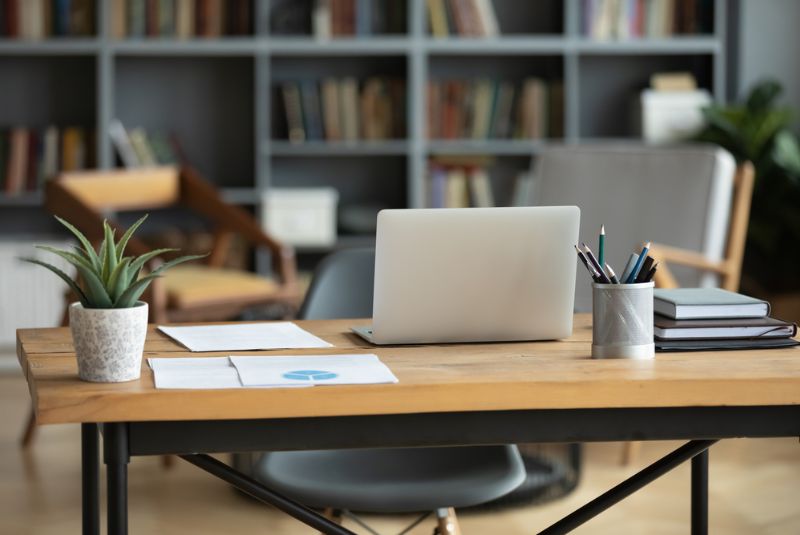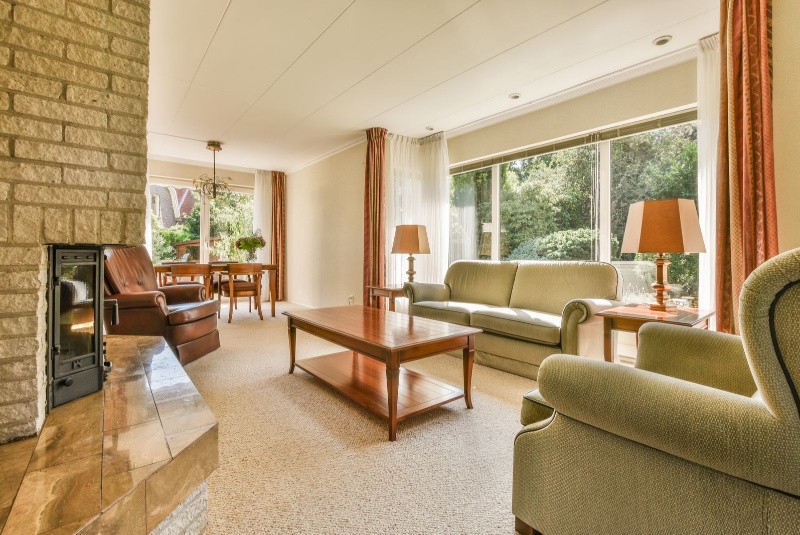Start with a Clear Vision of Your Ideal Workspace
Before you begin decluttering, visualize how you want your office space to look and function. Consider the items you need daily and those that can be stored away or discarded. A clear vision helps you stay focused on your goal and makes the decluttering process more efficient. It also ensures that your workspace reflects your personal style and meets your professional needs. By knowing exactly what you want to achieve, you can make more intentional decisions about what stays and what goes, ultimately creating a more organized and productive environment.
Remove Everything and Start Fresh
One effective decluttering method is to completely clear your workspace by removing all items from your desk, shelves, and drawers. Starting with a blank slate allows you to assess each item individually before returning it to your office. This approach helps you identify unnecessary items that contribute to clutter. As you reintroduce items, only keep those that are essential or bring you joy. This process not only reduces clutter but also gives you a newfound appreciation for the items you choose to keep, enhancing your overall satisfaction with your workspace.
Sort Items into Categories
Organize your belongings by sorting them into categories such as office supplies, documents, personal items, and electronics. This makes it easier to see how much you have of each type of item and to identify duplicates or unnecessary possessions. Categorizing helps streamline the decluttering process by allowing you to focus on one group at a time. It also aids in organizing your workspace more efficiently, as items in the same category can be stored together, making them easier to locate when needed and reducing future clutter.
Dispose of Unnecessary Items
Be ruthless in getting rid of items you no longer need. This includes old documents, broken or outdated electronics, and office supplies that you never use. Consider recycling or donating items that are still in good condition. Letting go of unnecessary items frees up valuable space and makes it easier to keep your office organized. Remember, the goal is to create a workspace that supports your productivity, so only keep items that serve a purpose or contribute positively to your work environment.

Organize Your Documents Digitally
Transitioning to digital document management can significantly reduce physical clutter. Scan important papers and store them securely on your computer or cloud storage. Organize digital files into clearly labeled folders for easy access. This not only saves physical space but also enhances document security and accessibility. Make sure to back up your digital files regularly to prevent data loss. By minimizing the amount of paper in your office, you create a cleaner, more modern workspace that is easier to maintain.
Use Storage Solutions Effectively
Invest in storage solutions such as shelves, drawers, and organizers to keep your items neatly arranged. Use drawer dividers for small items like stationery and cables, and consider shelving units for books and binders. Label containers and folders to make it easy to find what you need quickly. Effective storage prevents items from piling up on your desk and surfaces, maintaining a clutter-free environment. By giving everything a designated place, you reduce the likelihood of future clutter and make your office more functional.
Implement a Daily Cleaning Routine
Establish a routine to tidy up your workspace at the end of each day. Spend a few minutes putting away items, filing documents, and clearing your desk. Regular maintenance prevents clutter from accumulating and keeps your office looking its best. A clean workspace can improve your mood and productivity, making it a habit worth developing. Consistency is key; by making tidying a daily practice, you ensure that your office remains organized over the long term.
Limit Personal Items on Your Desk
While it's nice to personalize your workspace, too many personal items can contribute to clutter. Select a few meaningful objects like a family photo or a small plant to decorate your desk. Keeping personal items to a minimum maintains a professional appearance and reduces distractions. It also leaves more space for work-related materials, enhancing your efficiency. By carefully choosing the personal items you display, you strike a balance between personalization and practicality.
Manage Cables and Wires
Cables and wires can quickly become tangled and unsightly. Use cable organizers, clips, or sleeves to keep them neatly bundled and out of sight. Labeling cables can also help you identify them easily when needed. Managing your cables not only improves the appearance of your workspace but also reduces the risk of accidents and equipment damage. A tidy arrangement of cables contributes to a cleaner, more organized office environment.
Set Up Zones for Different Activities
Designate specific areas of your office for different tasks, such as a zone for computer work, another for filing, and a space for meetings or brainstorming. This organization helps keep items confined to their respective areas, reducing overall clutter. By having dedicated spaces, you can keep the necessary tools and materials within reach for each activity, improving efficiency. This zoning approach makes it easier to maintain order and ensures that your workspace supports your various work functions effectively.
Decluttering your office space is an investment in your productivity and well-being. By following these tips, you can create a workspace that is organized, efficient, and conducive to focus. Remember to maintain your decluttered space with regular cleaning and organization routines. A tidy office not only looks professional but also enhances your ability to work effectively, ultimately contributing to your success.




